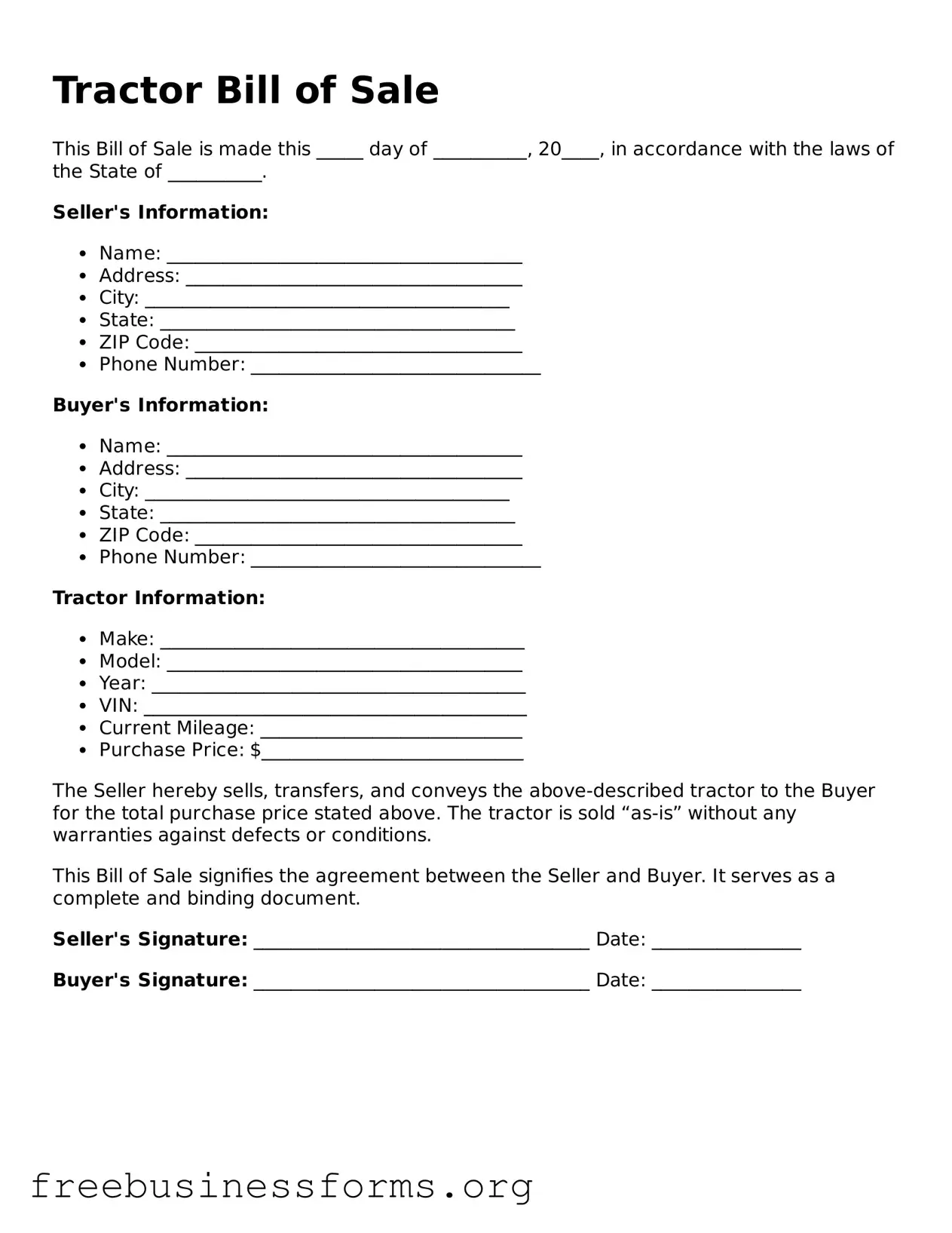Tractor Bill of Sale
This Bill of Sale is made this _____ day of __________, 20____, in accordance with the laws of the State of __________.
Seller's Information:
- Name: ______________________________________
- Address: ____________________________________
- City: _______________________________________
- State: ______________________________________
- ZIP Code: ___________________________________
- Phone Number: _______________________________
Buyer's Information:
- Name: ______________________________________
- Address: ____________________________________
- City: _______________________________________
- State: ______________________________________
- ZIP Code: ___________________________________
- Phone Number: _______________________________
Tractor Information:
- Make: _______________________________________
- Model: ______________________________________
- Year: ________________________________________
- VIN: _________________________________________
- Current Mileage: ____________________________
- Purchase Price: $____________________________
The Seller hereby sells, transfers, and conveys the above-described tractor to the Buyer for the total purchase price stated above. The tractor is sold “as-is” without any warranties against defects or conditions.
This Bill of Sale signifies the agreement between the Seller and Buyer. It serves as a complete and binding document.
Seller's Signature: ____________________________________ Date: ________________
Buyer's Signature: ____________________________________ Date: ________________
